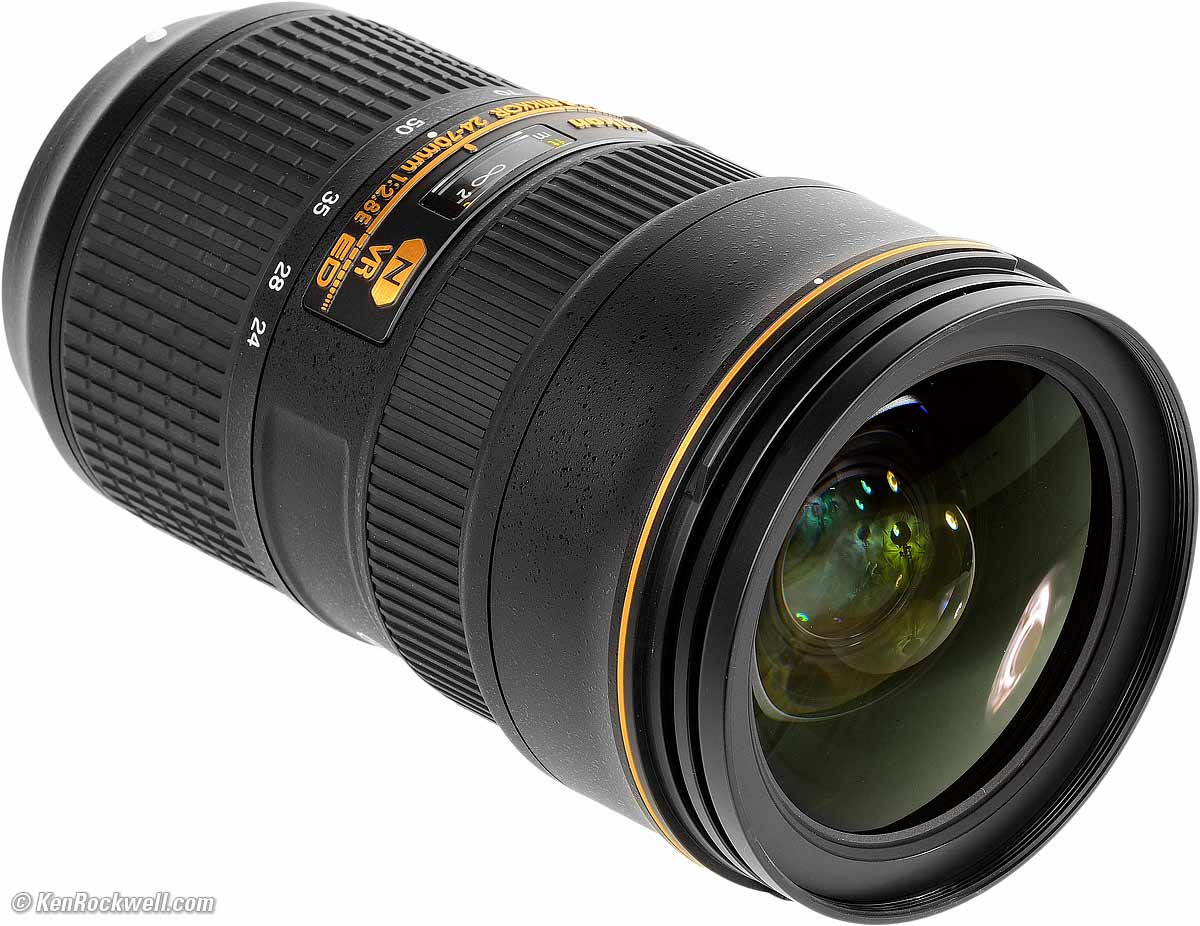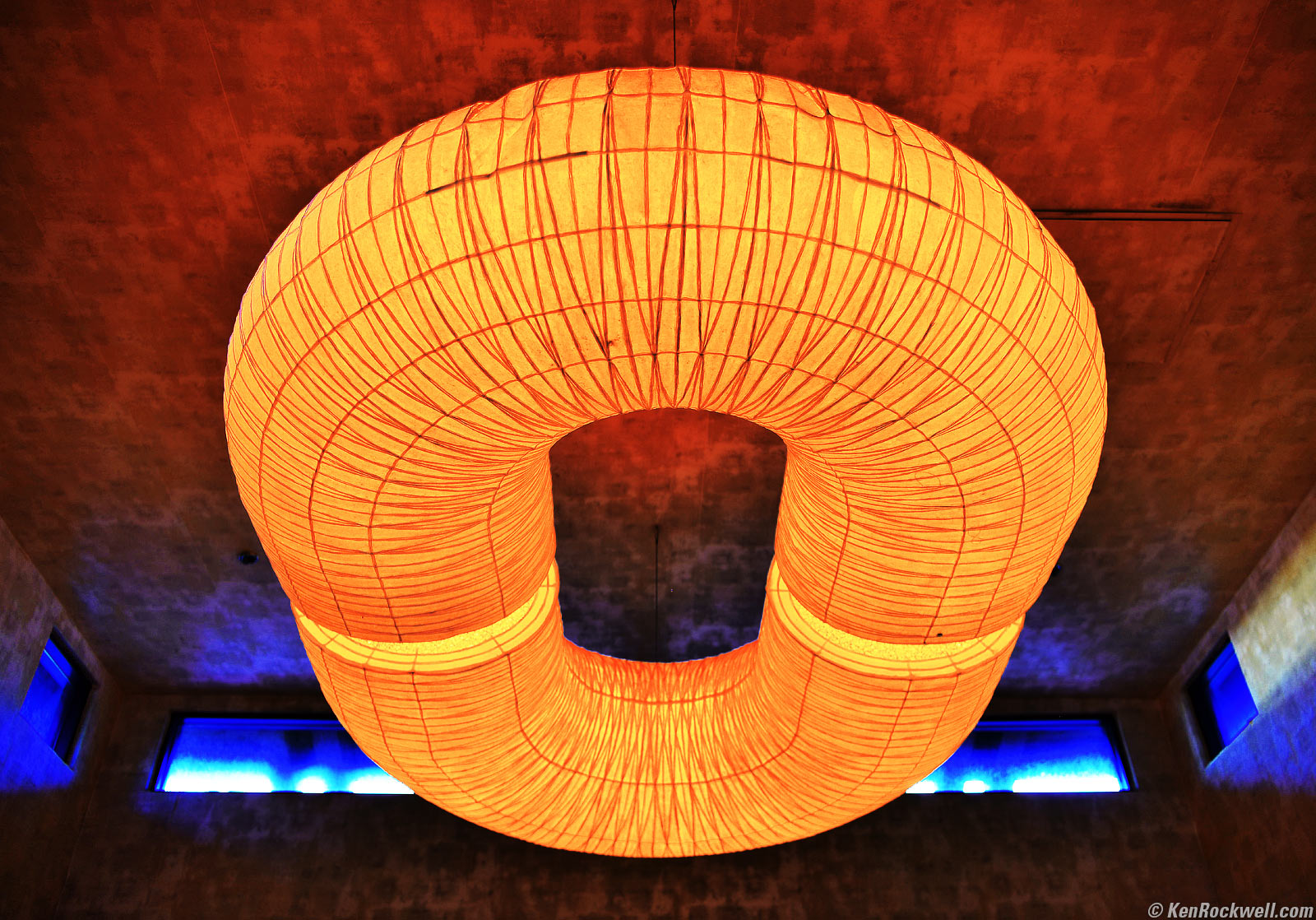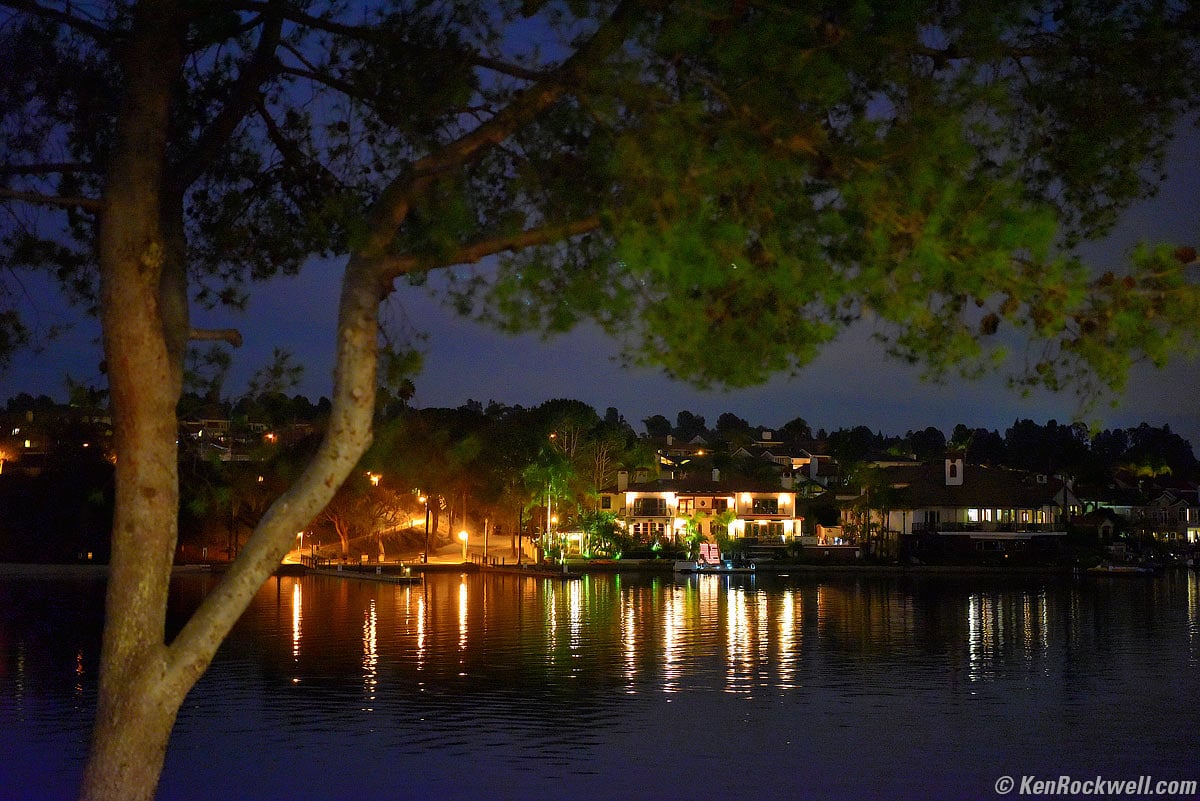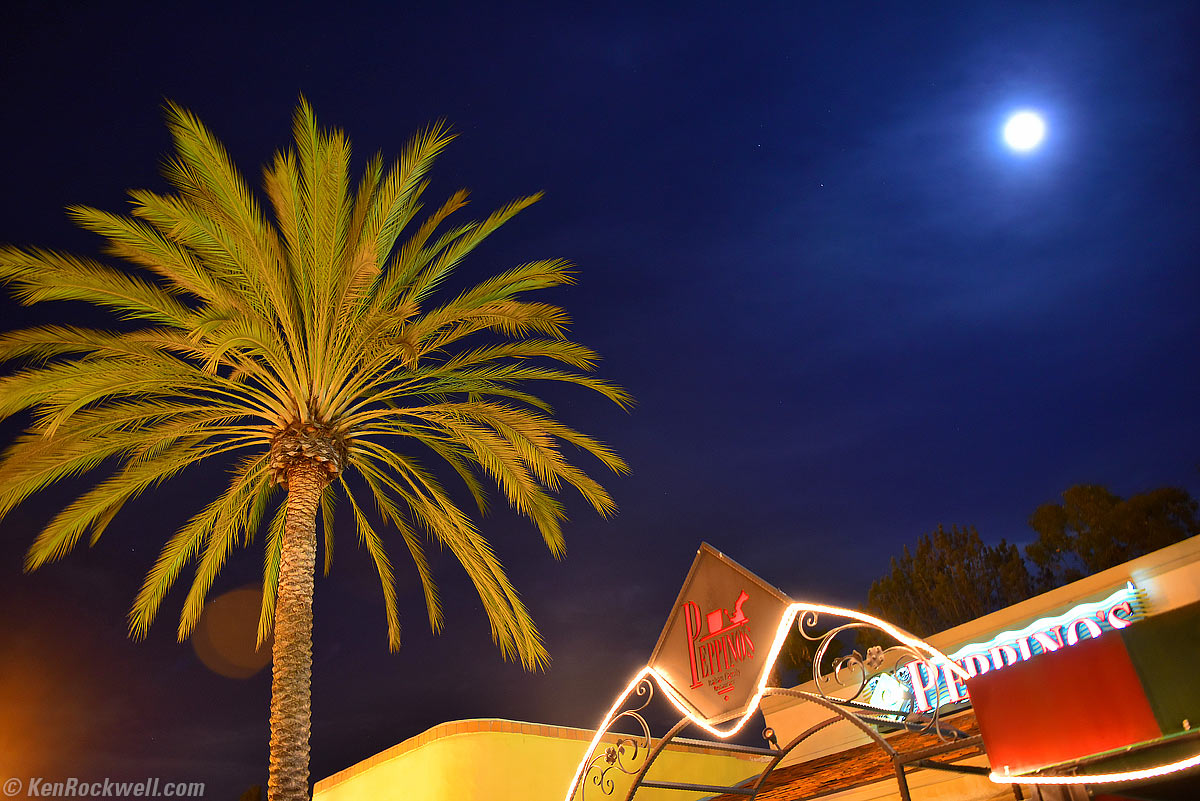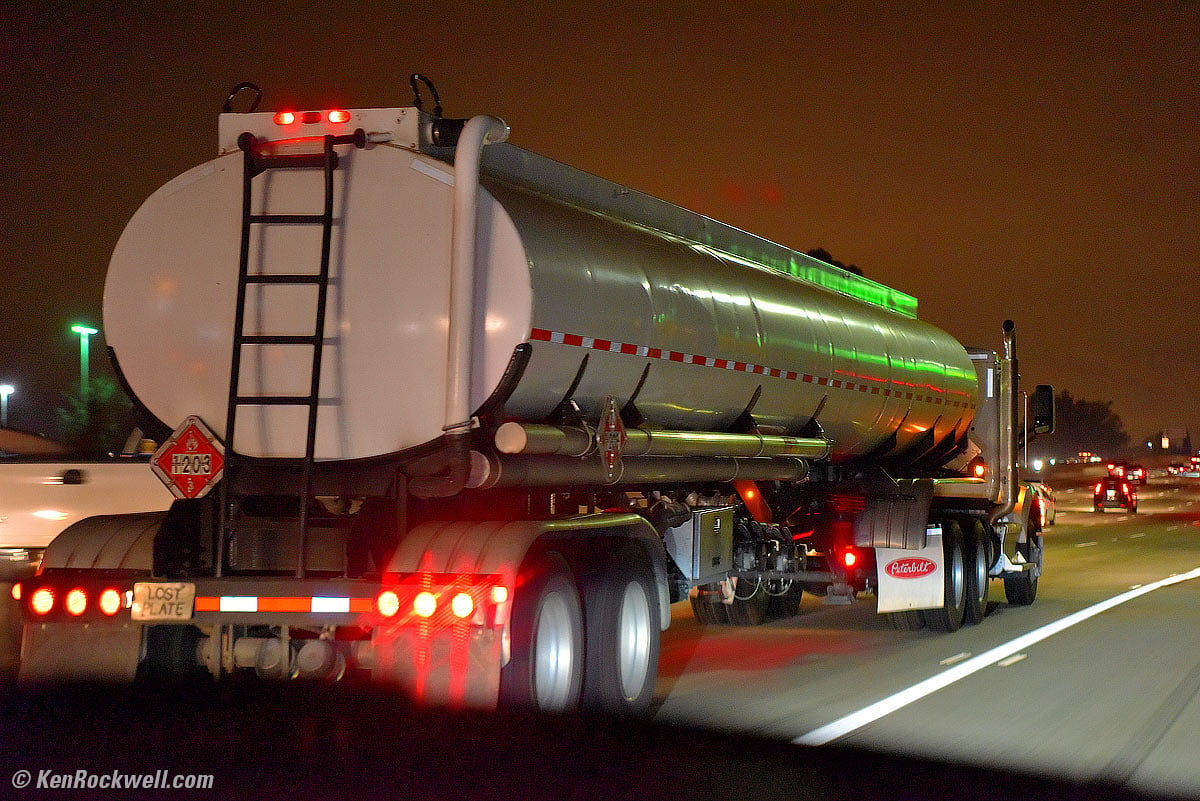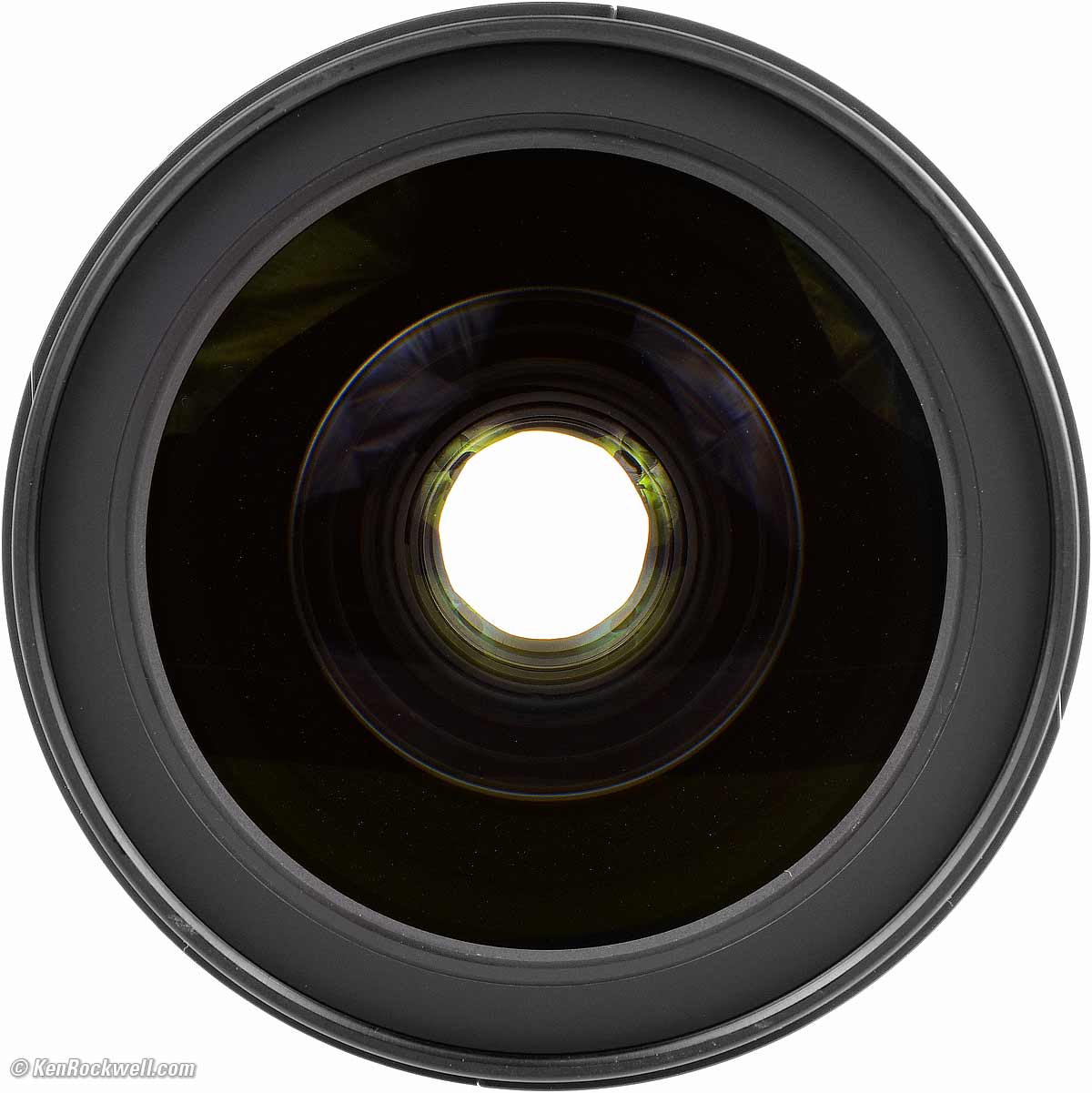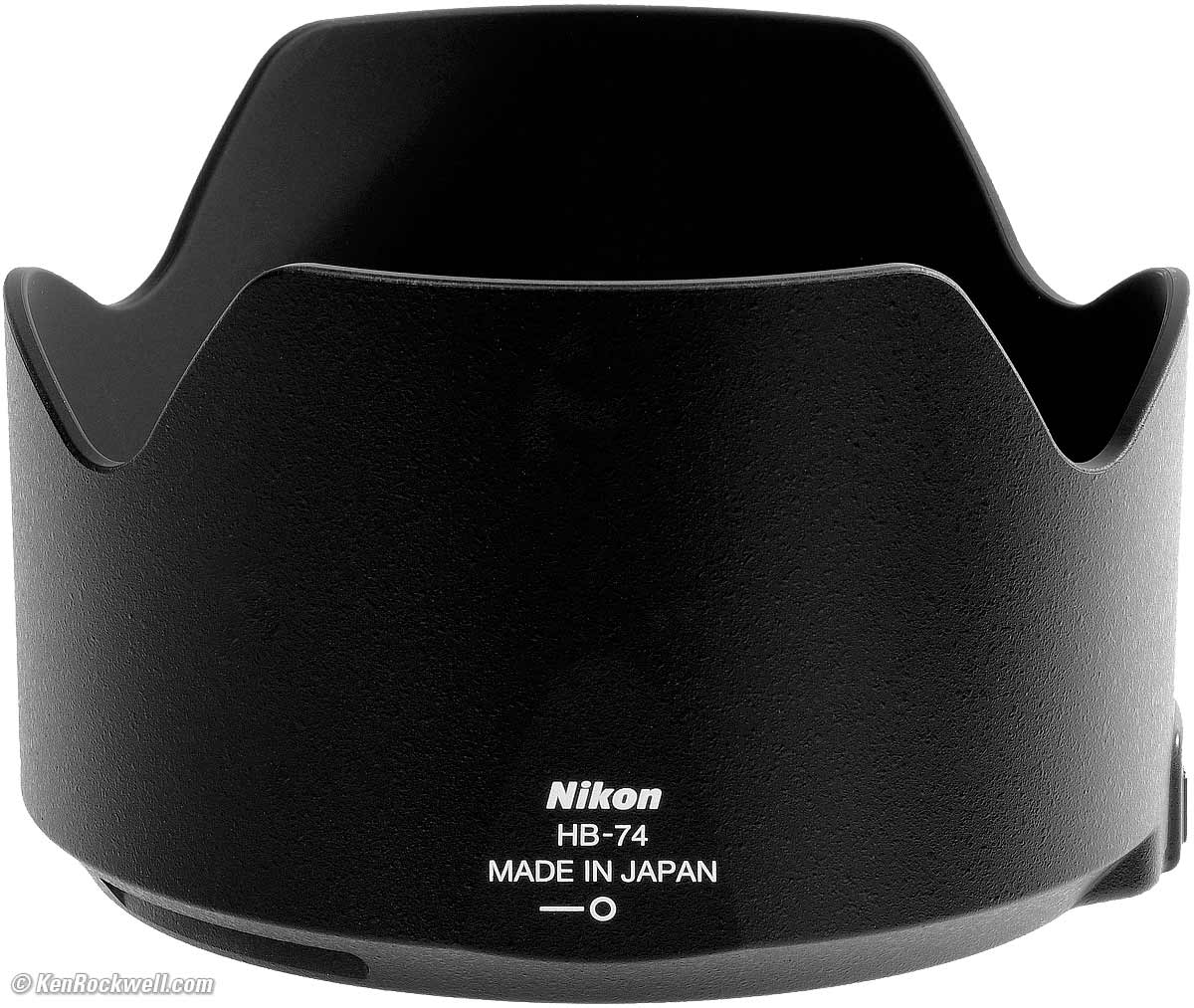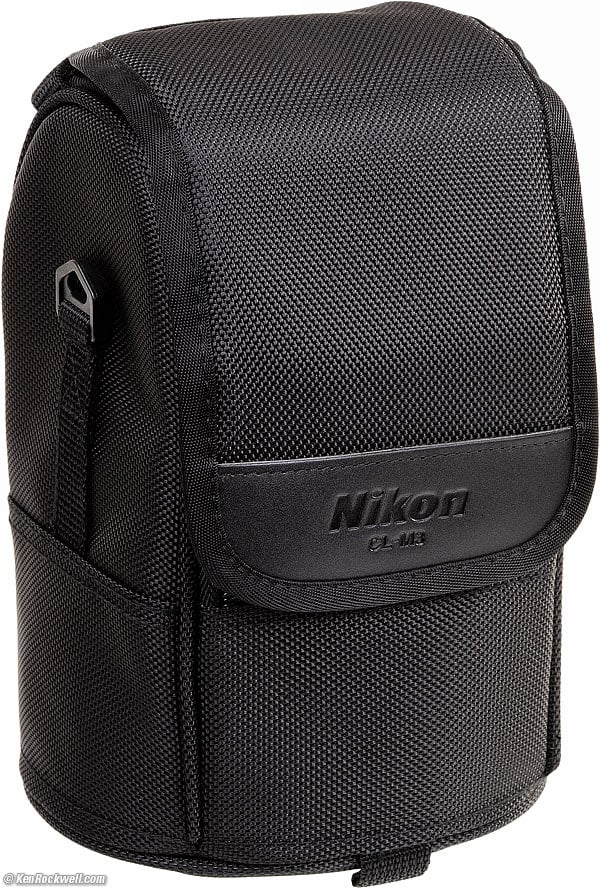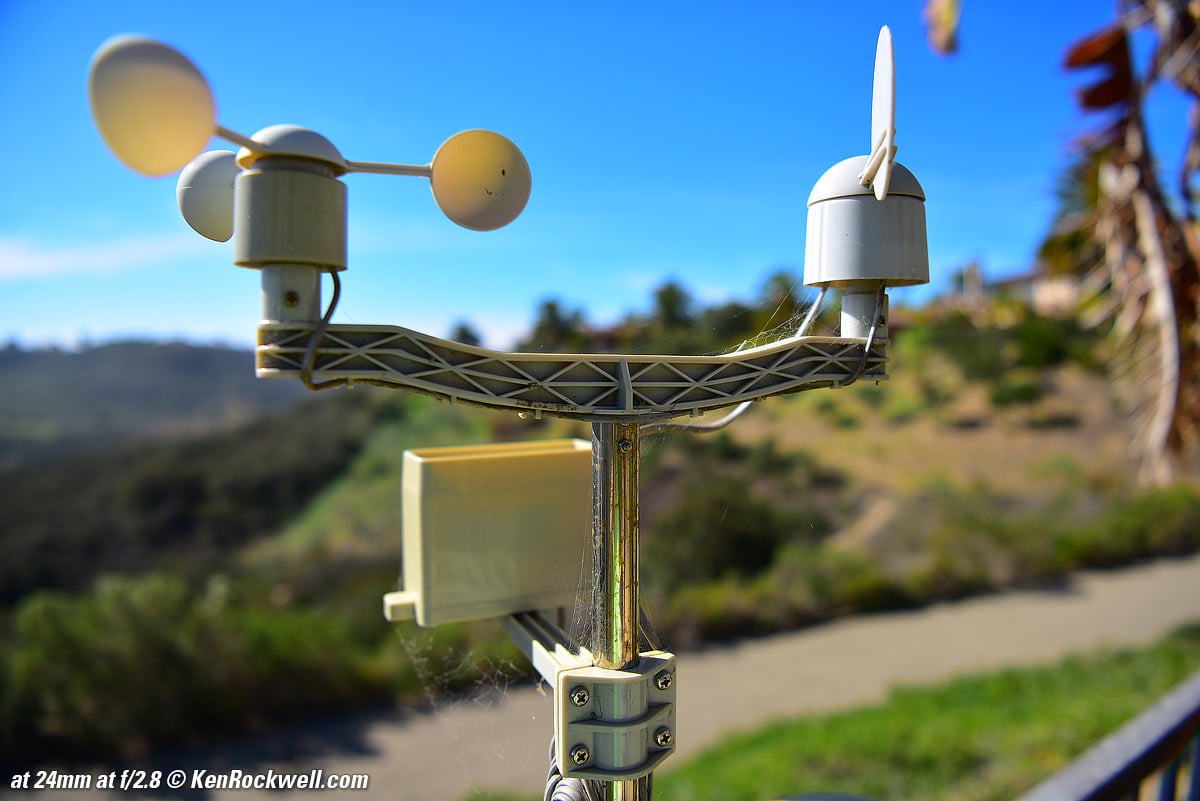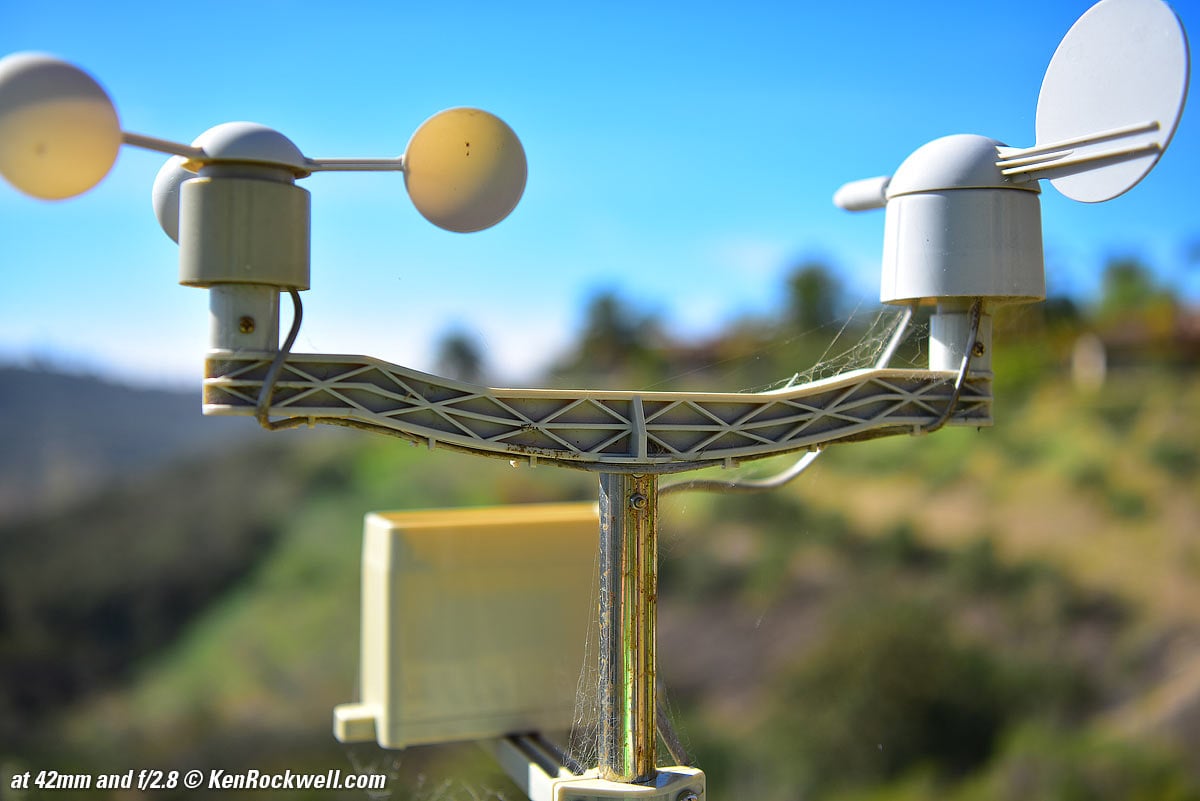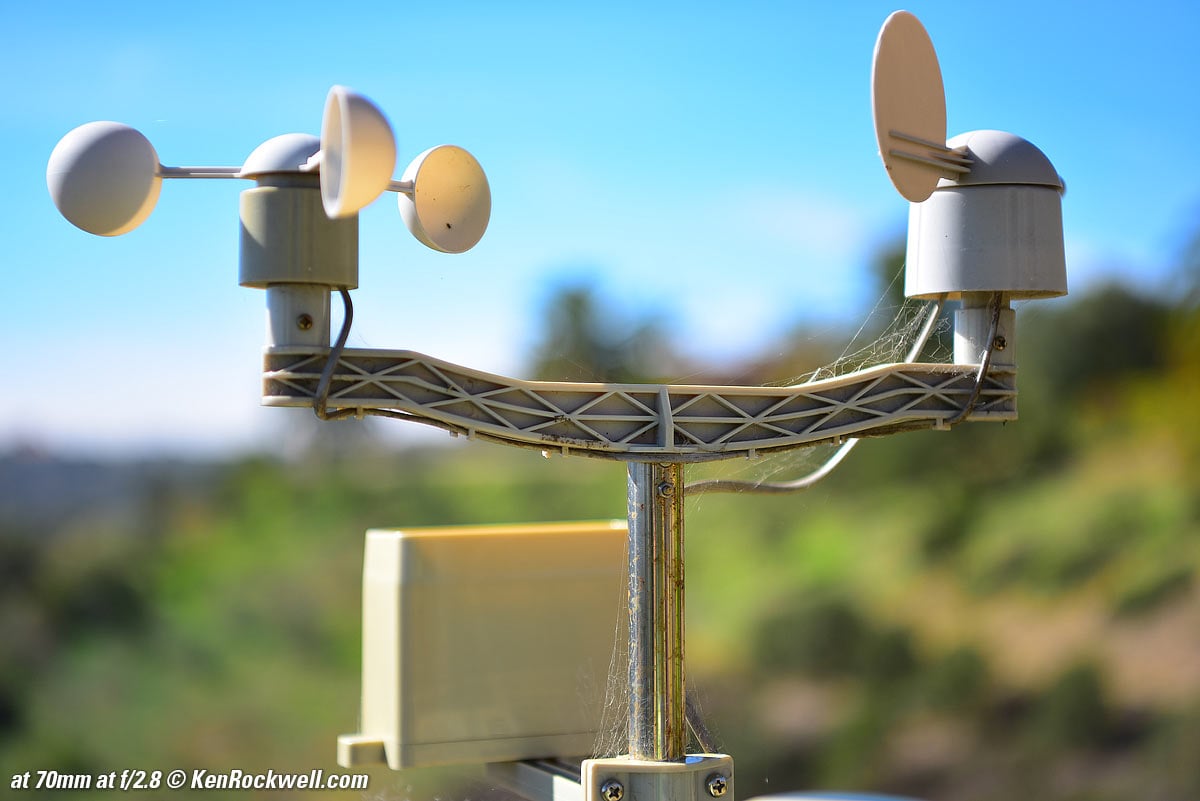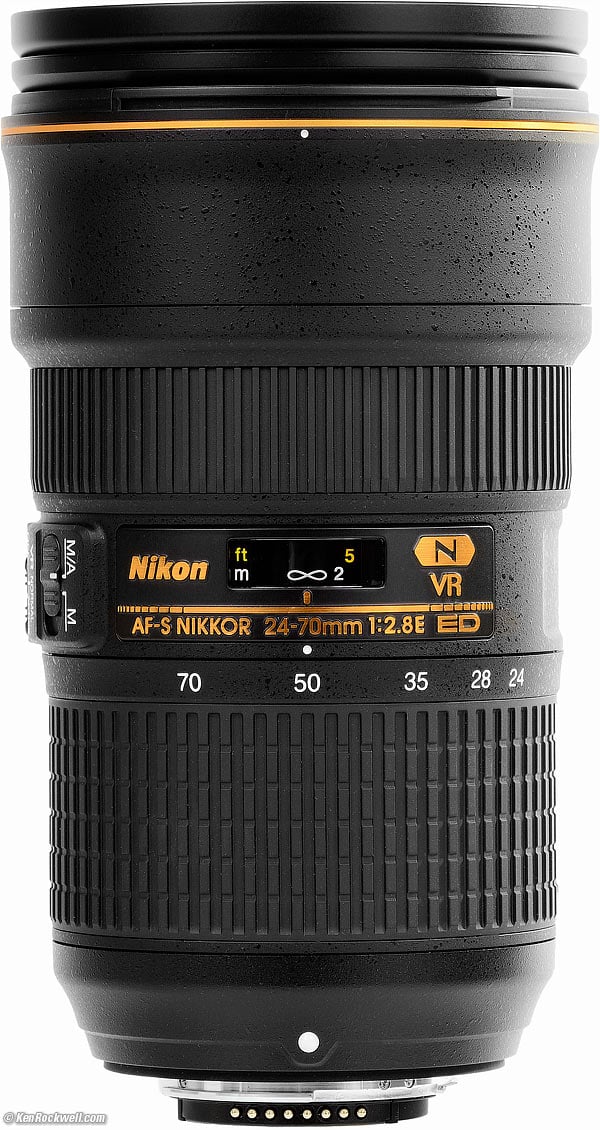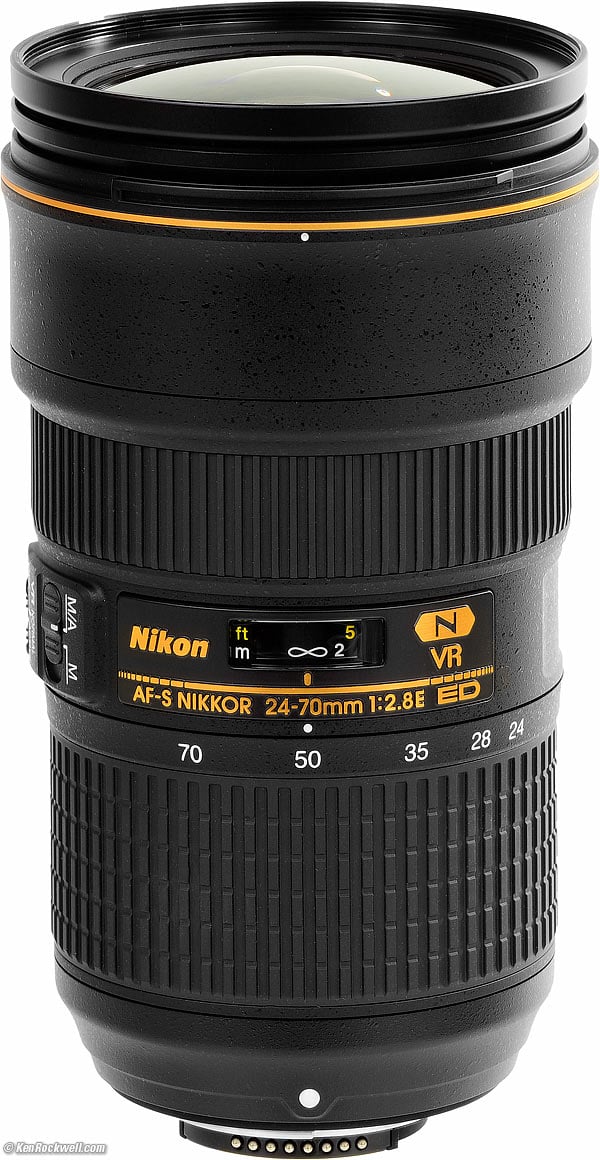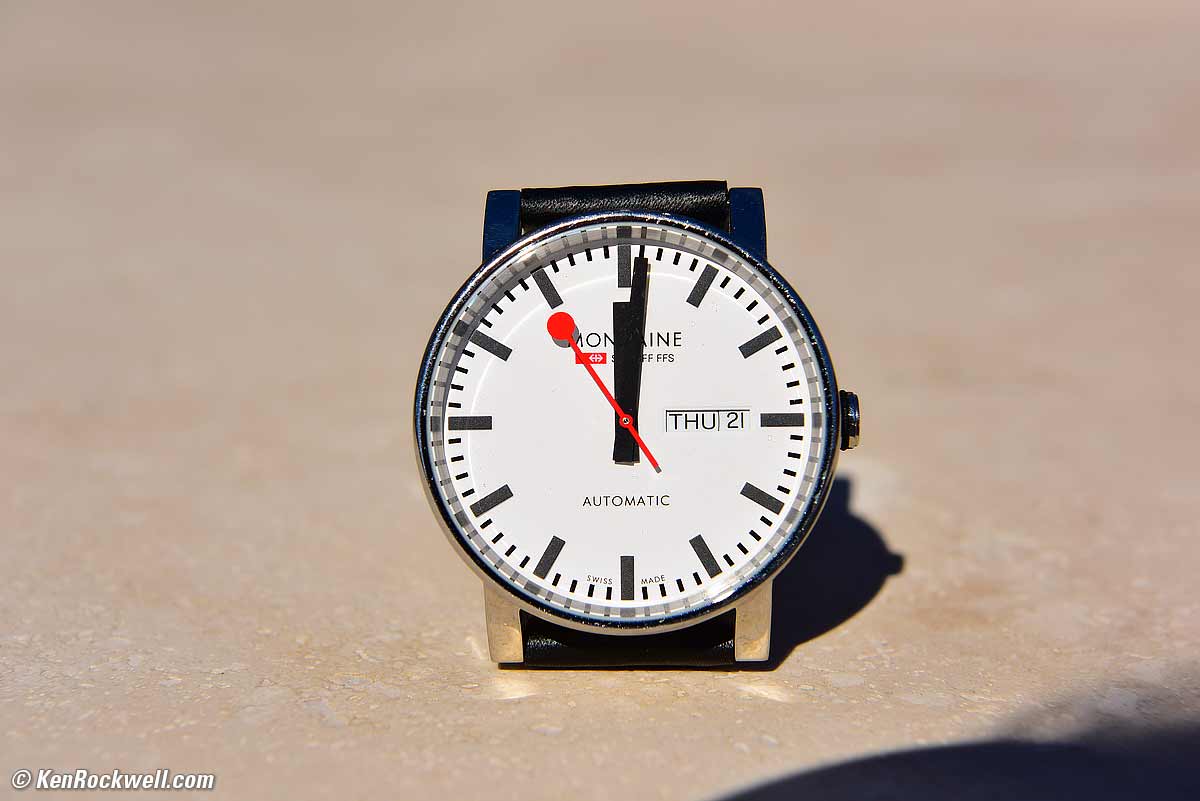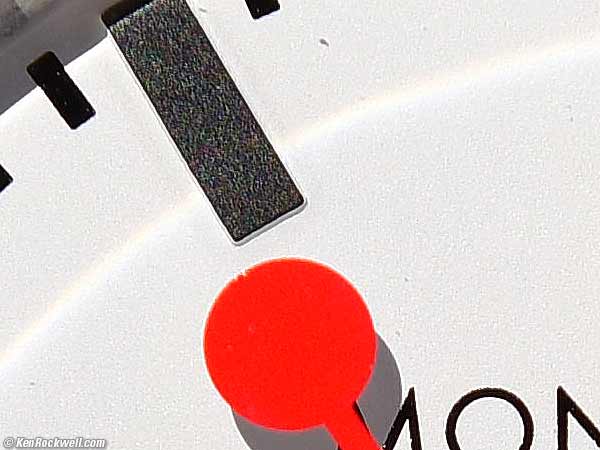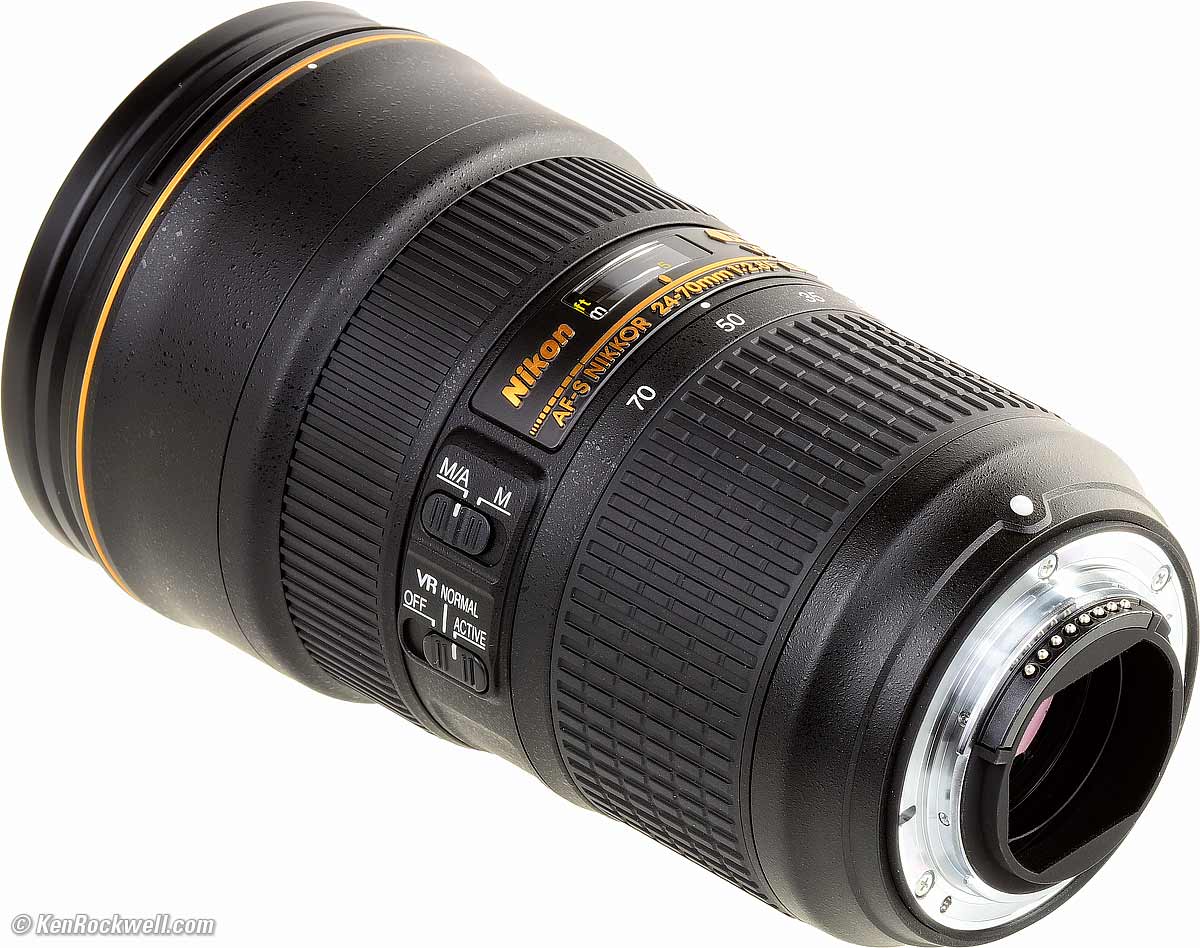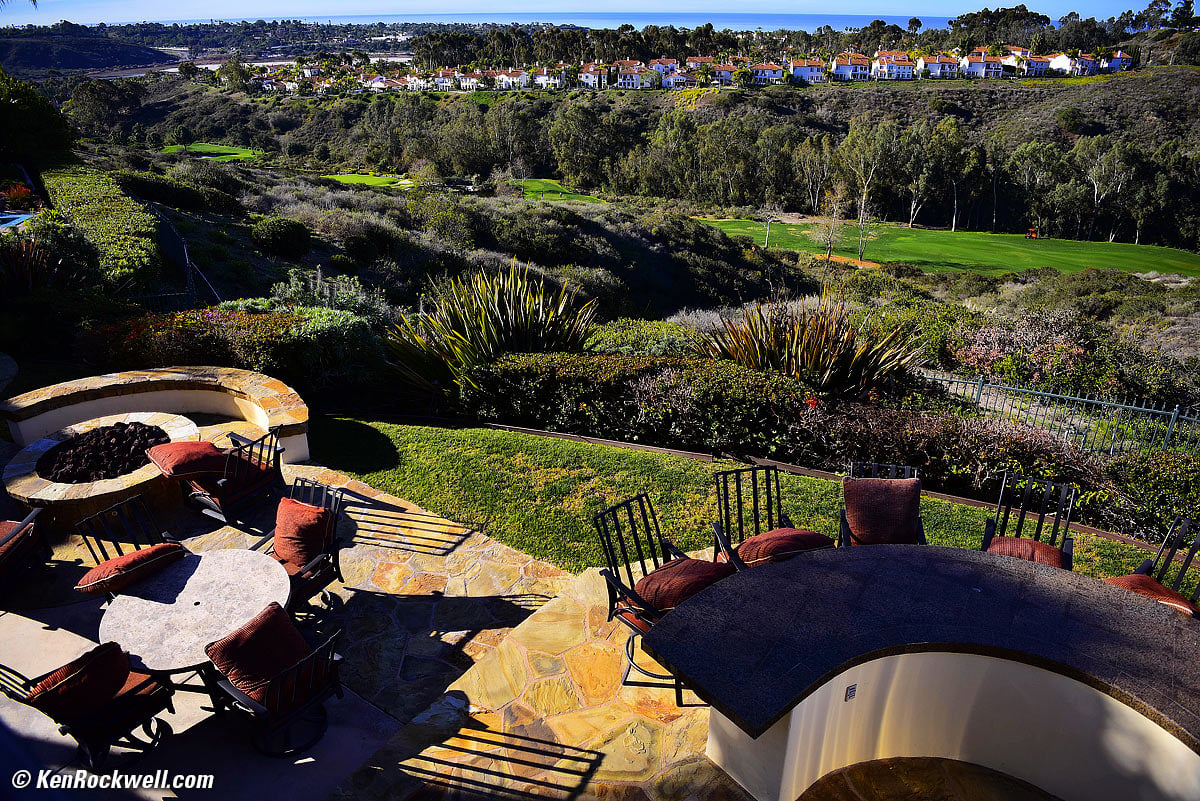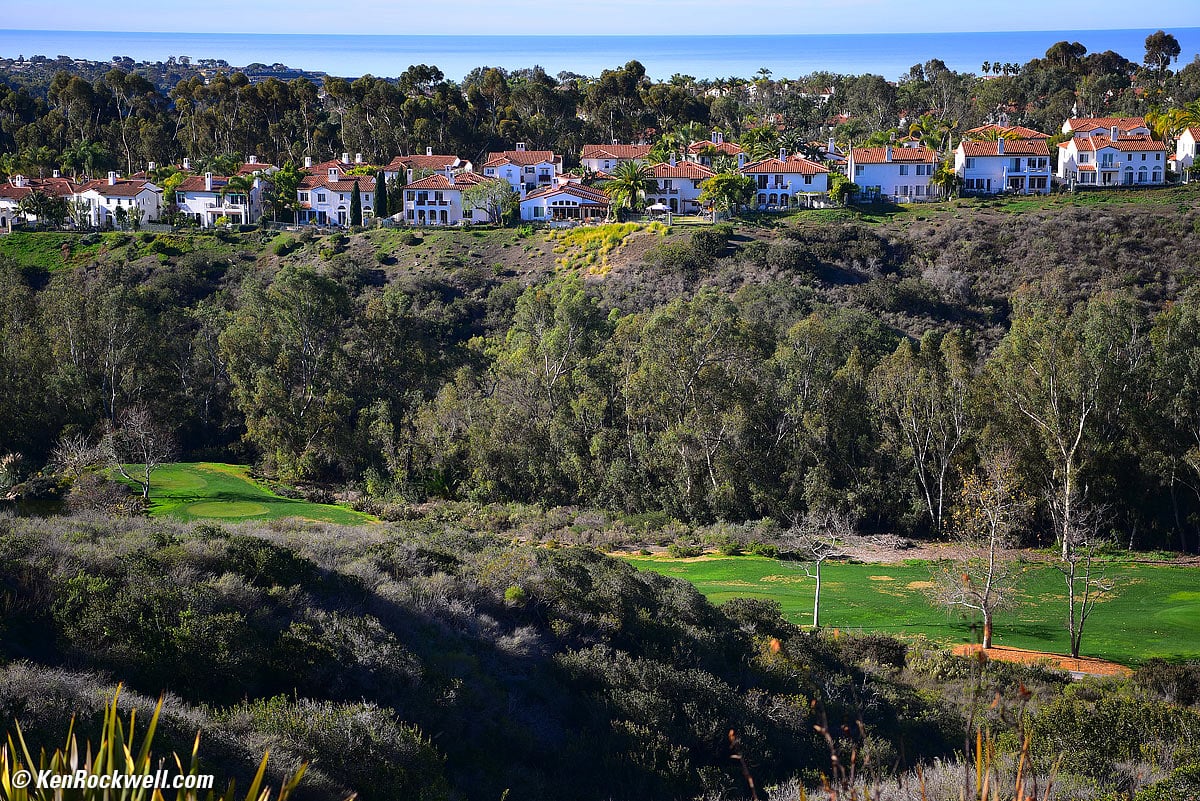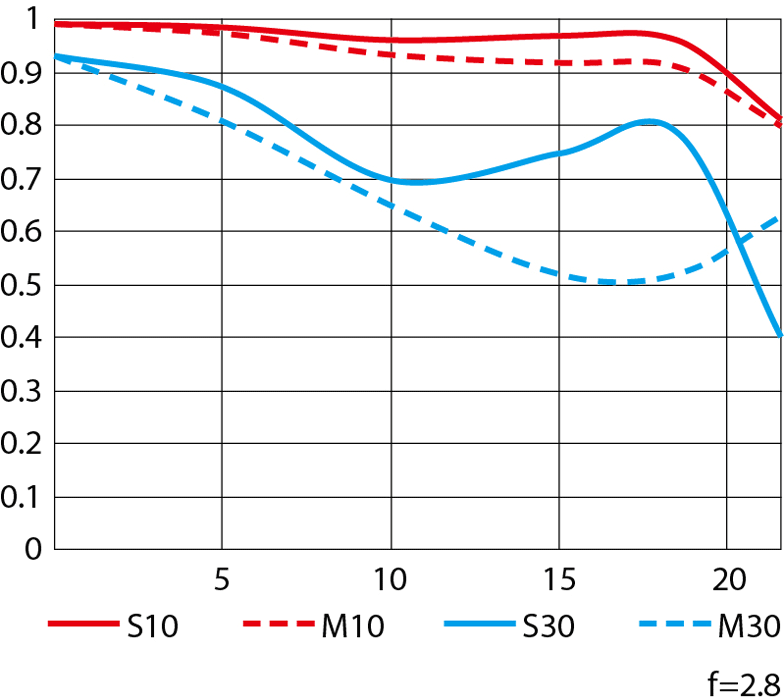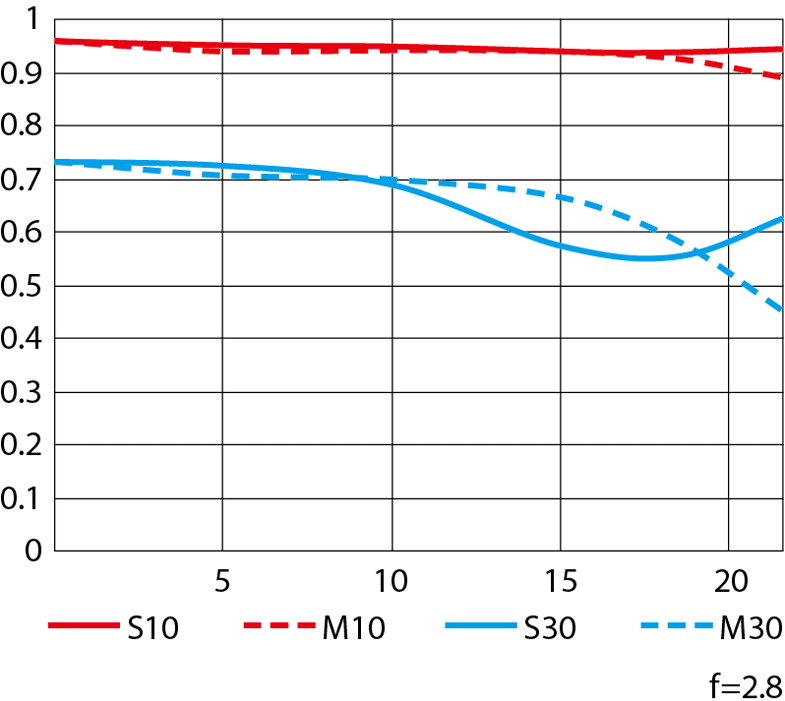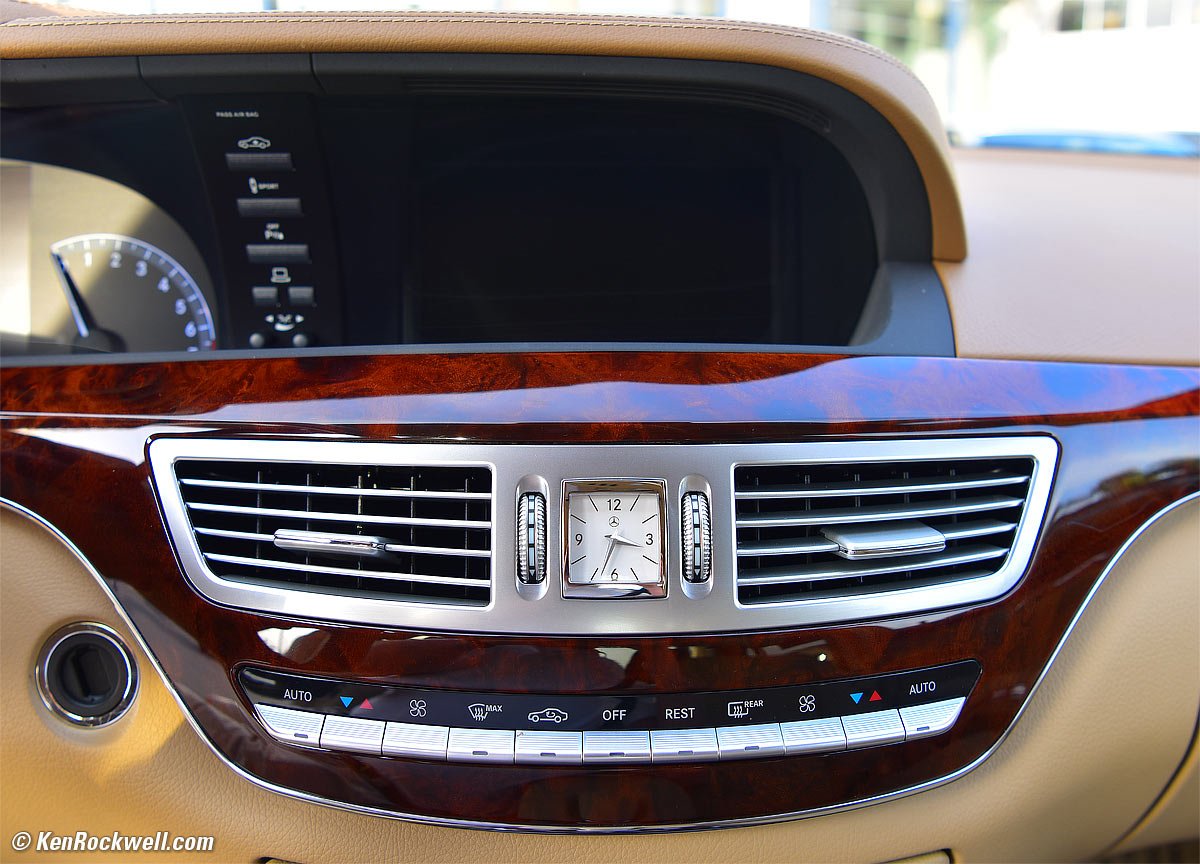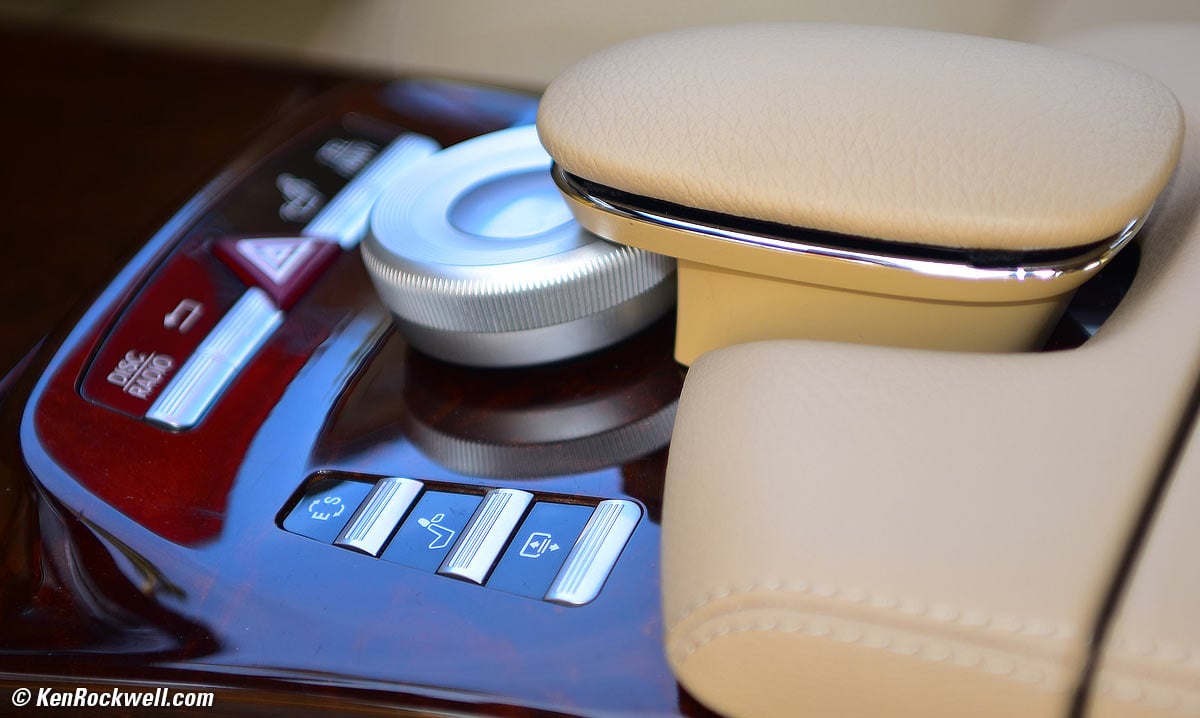Home Donate New Search Gallery Reviews How-To Books Links Workshops About Contact
Nikon 24-70mm VR
f/2.8 FX AF-S E N ED (2015-)
Sample Images Intro Compatibility
Format Specifications Performance
Compared Usage Recommendations More
Nikon AF-S NIKKOR 24-70mm f/2.8E ED VR (FX and DX coverage, plastic 82mm filter thread, 37.6 oz./1,067 g, 1.3'/0.4 m close focus, $1,597 new or about $1,200 used). enlarge. I got mine at Adorama; I'd also suggest getting it from B&H, from Amazon or from Crutchfield, or get it used if you know How to Win at eBay.
This all-content, junk-free website's biggest source of support is when you use those or any of these links to approved sources when you get anything, regardless of the country in which you live. Nikon does not seal its boxes in any way, so never buy at retail or any source not on my personally approved list since you'll have no way of knowing if you're missing accessories, getting a defective, dropped, damaged or used lens, a customer return or if the warranty has already been registered to someone else online! The approved sources I use ship from secure, remote automated warehouses where salespeople or other customers never, ever get to touch your lens before you do, and they have the best prices, selection, service and return policies.
Adorama pays top dollar for your used gear, especially the old 24-70mm f/2.8G and all other Nikon lenses.
May 2022 Nikon Reviews Nikon Lenses All Reviews
24-70mm f/2.8G (2007-2015)
Canon 24-70mm f/2.8 L II (2012-)
All other Nikon professional midrange zooms
Sample Images
Top Sample Images Intro Compatibility
Format Specifications Performance
Compared Usage Recommendations More
Casa Machado, 14 January 2016. Nikon D810, Nikon 24-70mm E VR at 24mm, f/8 at 1/250 at ISO 100, distortion corrected at +5.00 in Photoshop's Lens Distortion tool. bigger, bigger uncorrected image or camera-original 36MP file to explore on your computer (mobile devices rarely display the full resolution image properly). Note that you're not seeing noise; you're seeing the cottage-cheese texture of the cement, and also note that the bottom left and right sections are too close to be in focus.
Floating Torus, 18 January 2016. Nikon D810, Nikon 24-70mm E VR at 32mm, f/2.8 at 1/15 hand-held at ISO 100. bigger.
Lake Mission Viejo by Moonlight, 22 January 2016. Nikon D810, Nikon 24-70mm E VR at 70mm, f/2.8 at 1/4 second hand-held at ISO 6,400. bigger or camera-original 36MP file to explore on your computer (mobile devices rarely display the full resolution image properly).
Sharp at a quarter of a second under moonlight — hand held at 70mm!
Palm by Moonlight, 22 January 2016. Nikon D810, Nikon 24-70mm E VR at 28mm, f/2.8 at 1/2 second hand-held at ISO 800. bigger or camera-original 36MP file to explore on your computer (mobile devices rarely display the full resolution image properly).
Sharp half-second exposures are easy with good hand-held shooting technique. Of course not much is in focus at f/2.8, but I've got moonlight shots with no need for a tripod — at only ISO 800!
Bootleg gasoline tanker under pursuit, 09 January 2016. Nikon D810, Nikon 24-70mm E VR, f/2.8 at 1/20 second hand-held at 70 MPH at 70mm at ISO 4,500. bigger.
Not only is VR superb hand-held when you're not moving, it also works great shot out of the windshield of a moving chase vehicle at 1/20 of a second at the telephoto setting. I don't know that I even needed to use the ACTIVE setting; it probably was on NORMAL VR.
Introduction top
Top Sample Images Intro Compatibility
Format Specifications Performance
Compared Usage Recommendations More
This new 24-70E VR is Nikon's sharpest professional midrange zoom ever. If you want the sharpest possible 24-70 lens, read no further; this is it.
This 24-70 is supremely sharp from edge-to-edge at 36 megapixels even wide-open at f/2.8, period. While the old 24-70mm f/2.8G (2007-2015) looked great when shot on the 12 MP cameras that were state-of-the-art when it was introduced in 2007, today on modern cameras this new E and VR lens is clearly superior.
This new lens adds Vibration Reduction (VR) to the old 24-70mm f/2.8G of 2007.
Downsides are that this new lens is bigger and heavier and more expensive, and it's much more plasticy than the old 24-70mm f/2.8G. This new lens is all plastic on the outside, unlike older pro lenses that used plenty of metal.
This new lens uses the "E" electronic diaphragm, making it incompatible with cameras introduced before about 2007.
This new lens uses 82mm filters, demanding you buy new front lens accessories along with this lens.
VR (Vibration Reduction) isn't just fluff as it is on Sony; I easily can handhold this lens down to a half or quarter second.
Grab the focus ring at any time (or just flick it with a fingertip) for instant manual focus override.
I got my 24-70mm f/2.8 VR at Adorama; I'd also suggest getting it from B&H, from Amazon or from Crutchfield, or get it used if you know How to Win at eBay.
Top Sample Images Intro Compatibility
Format Specifications Performance
Compared Usage Recommendations More
I got my 24-70mm f/2.8 VR at Adorama; I'd also suggest getting it from B&H, from Amazon or from Crutchfield, or get it used if you know How to Win at eBay.
The 24-70E works perfectly on all FX cameras.
This lens uses an electronic diaphragm, and therefore is only fully compatible with cameras introduced since about 2007, which includes all FX cameras. See Nikon Lens Compatibility for the complete list.
Nikon tells us it will not work properly with older DX DSLRs and will not work properly on any 35mm camera. Older cameras cannot control the diaphragm and it will always shoot at f/2.8.
Just for fun I tried it on my 1988 Nikon F4. It autofocuses, but there is no VR. It meters and auto-exposes perfectly — but it only meters for and shoots at f/2.8.
I tried it on my Nikon F6, and everything works fine — except it only shoots at f/2.8.
I tried it on my Nikon F3 and Nikon FM3a, and it also works great, of course with manual focus, no VR and only at f/2.8.
The real limitation on older cameras is that it shoots only wide-open. So long as you want to shoot at f/2.8, no problem; but there is no way on cameras that were introduced before 2007 to stop down the electronic diaphragm.
Top Sample Images Intro Compatibility
Format Specifications Performance
Compared Usage Recommendations More
I got my 24-70mm f/2.8 VR at Adorama; I'd also suggest getting it from B&H, from Amazon or from Crutchfield, or get it used if you know How to Win at eBay.
This is a full-frame lens optimized for use on FX cameras, and I'll be reviewing it as such.
It works great on DX cameras, for which you may make the usual inferences.
Top Sample Images Intro Compatibility
Format Specifications Performance
Compared Usage Recommendations More
I got my 24-70mm f/2.8 VR at Adorama; I'd also suggest getting it from B&H, from Amazon or from Crutchfield, or get it used if you know How to Win at eBay.
Name top
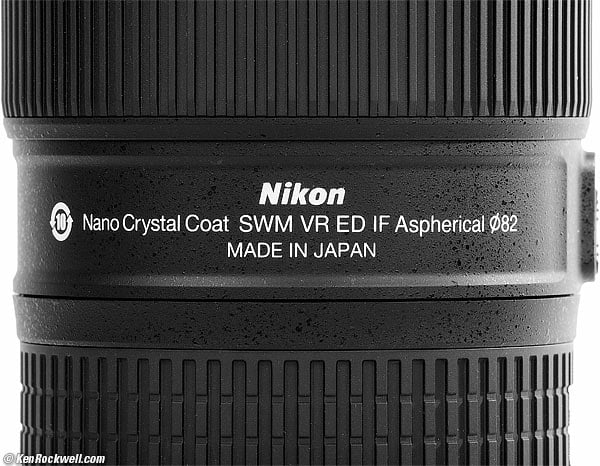
Nikon 24-70mm f/2.8 E VR.
Nikon calls this the Nikon AF-S NIKKOR 24-70mm f/2.8E ED VR SWM IF ∅82 N.
AF-S and SWM: Silent Wave Autofocus Motor.
NIKKOR: Nikon's brand name for all their lenses.
E: Electronic diaphragm, just like Canon has been doing since 1987. This means it only works on the newest Nikon cameras.
ED: Magic Extra-low Dispersion glass for reduced secondary chromatic aberration.
VR: Vibration Reduction. Claims almost 4 stops improvement.
IF: Internal focusing; nothing moves externally as focused.
∅82: 82mm filter thread.
N: "Nano" continuously variable index of refraction anti-reflection coatings.
Optics top

Nikon 24-70/2.8 VR internal diagram. Aspherical ED glass, ED glass and Aspherical elements.
20 elements in 16 groups.
Two ED glass elements.
One Aspherical Extra-Low Dispersion (ASP/ED) glass element.
Three aspherical elements.
One high refractive index (HRI) element.
Internal focussing.
It's multicoated, which Nikon calls Nikon Super Integrated Coating.
One element has Nano coating for marketing purposes.
Front and rear fluorine schmutz-resistant coatings.
Close Focus top
1.35 feet (0.41 meters) from the image plane.
It is rated slightly closer from 35mm to 50mm: 1.25 feet (0.38 meters) from the image plane.
Maximum Reproduction Ratio top
1:3.6 (0.28x).
Diaphragm top
Nikon 24-70mm f/2.8 E V at 70mm at f/2.8. bigger.
9 rounded blades.
Stops down to f/22.
Electronically controlled for quieter operation, but isn't compatible with cameras made before about 2007.
Vibration Reduction top
Rated 4 stops improvement.
Coverage top
Focal Length top
24-70mm.
When used on a DX camera, it sees angles of view similar to what a 35-105mm lens sees when used on an FX or 35mm camera.
Angle of View top
84° ~ 34.3º on FX digital and 35mm.
61° ~ 22.7º on small-format DX.
Hard Infinity Focus Stop? top
No.
You have to let the AF system focus at infinity.
Focus Scale top
Yes.
Depth-of-Field Scale top
No.
Infra-Red Focus Index top
No.
Aperture Ring top
No.
Filter Thread top
82 mm.
Thin plastic.
Hood top
Included Nikon HB-74 hood. bigger.
HB-74 plastic bayonet hood, included.
$40 for a replacement.
Case top
CL-M3 case. bigger. |
Rear, CL-M3 case. bigger. |
CL-M3 padded nylon case, included.
It's the same case included with the old 24-70/2.8G, the 14-24mm and the 300mm f/4 PF.
Belt loop, velcro and dual-zipper closure.
Size top
3.46" (88 mm) diameter by 6.08" (154.5 mm) extension from flange.
Weight top
37.645 oz. (1,067.2 g), actual measured.
Rated 37.7 oz. (1,070 g).
Quality top
Made in Japan.
(Caps from Thailand.)
Included top
HB-74 plastic bayonet hood.
LF-4 rear cap.
CL-M3 case.
Paperwork.
Warranty top
5 years, USA.
You'll see a "5" on a seal on the box, and have a card in the box that specifically says 1 + 4 years USA.
If you don't have these, you got ripped-off with a gray-market lens. Buy only from approved sources to prevent this.
Nikon Model Number top
20052.
Announced top
Tuesday, 04 August 2015, 12:01 AM NYC time.
Promised for top
Originally promised for late August 2015, but didn't ship until late fall 2015.
Price, USA top
May 2022
$1,597 at Adorama, from B&H, from Amazon or from Crutchfield.
April 2022
August 2015 (introduction) through July 2017
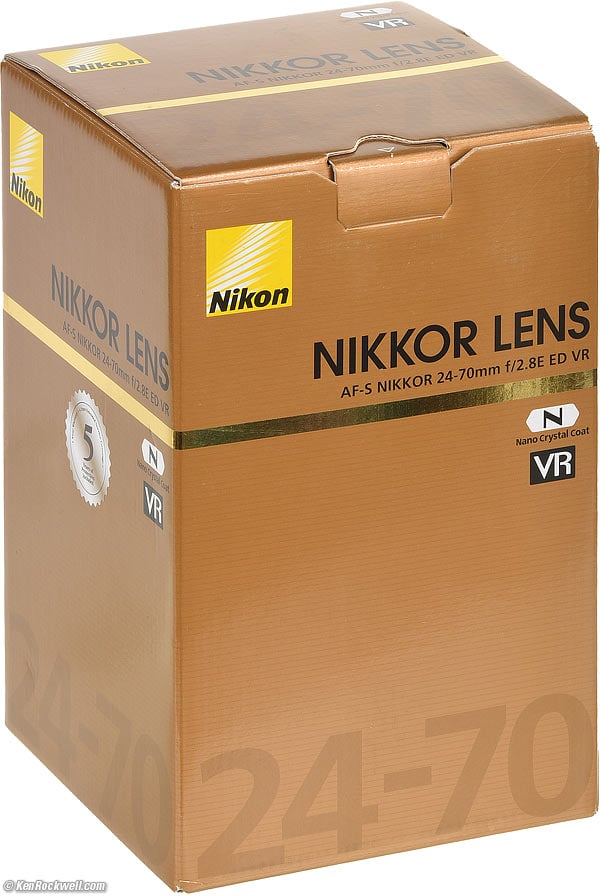
Box, Nikon 24-70mm f/2.8 E VR.
Top Sample Images Intro Compatibility
Format Specifications Performance
Compared Usage Recommendations More
Overall Autofocus Bokeh Distortion Ergonomics Eyeblow
Falloff Filters Flare & Ghosts Lateral Color Fringes Macro Mechanics
Sharpness Spherochromatism Sunstars Vibration Reduction
I got my 24-70mm f/2.8 VR at Adorama; I'd also suggest getting it from B&H, from Amazon or from Crutchfield, or get it used if you know How to Win at eBay.
Overall
It feels plasticy because it is, and it's also Nikon's sharpest midrange zoom ever.
It has loads of easy-to-correct distortion.
Its new Vibration Reduction (VR) system lets me shoot at 1/2 to 1/4 second hand-held. It's magnificent!
It's Nikon's biggest, heaviest, sharpest and most expensive midrange zoom ever, but it feels dinkier than every other pro lens. This is a lens for shooters, not for equipment collectors.
Focus
Autofocus
Autofocus is fast and accurate, no worries here. It just goes.
Manual Focus
Grab the focus ring at any time for instant manual focus override, or slide the switch to M.
It's just about right at 24mm, but too touchy (too fast) at 70mm. You have to move the focus ring very carefully at 70mm.
Bokeh
Bokeh, the quality of out-of-focus areas as opposed to the degree of defocus, is pretty good. It's not flawless, but does a decent job of getting backgrounds out of the way.
Like all lenses, for the softest backgrounds, zoom to the longest focal length, get as close as possible to your subject and shoot at the largest aperture.
Here are samples shot wide open from headshot distance. Click any for the camera-original file to explore on your computer (portable devices rarely display the full resolution of these files properly):
Full-Frame bokeh at 24mm at f/2.8. Nikon D810 at ISO 100. bigger or camera-original 36MP file to explore on your computer (mobile devices rarely display the full resolution image properly).
Full-Frame bokeh at 42mm at f/2.8. Nikon D810 at ISO 100. bigger or camera-original 36MP file to explore on your computer (mobile devices rarely display the full resolution image properly).
Full-Frame bokeh at 70mm at f/2.8. Nikon D810 at ISO 100. bigger or camera-original 36MP file to explore on your computer (mobile devices rarely display the full resolution image properly).
Distortion
Casa Machado, 18 January 2016. Nikon D810, Nikon 24-70mm E VR at 24mm, f/8 at 1/250 at ISO 100. bigger uncorrected image or camera-original 36MP file to explore on your computer (mobile devices rarely display the full resolution image properly). Here's it after correction at +5.00 in Photoshop's Lens Distortion tool . bigger.
The Nikon 24-70 2.8 E VR has severe barrel distortion at 24mm and strong pincushion distortion at 70mm, but it's easy to correct and most newer cameras can be set to correct it automatically.
Shot without correction at the closest focus distance, the distortion at 24mm is so strong that it simulates a mild fisheye effect; but no worries as cameras can be set to correct this.
If you have no correction, shoot between 28mm and 35mm and there is no distortion. Even without correction you will only rarely notice distortion in normal picture taking — but at 24mm and 0.38 meters this lens does have the dubious distinction of having the highest distortion I've ever recorded for any Nikon non-fisheye lens.
Since this lens won't work on 35mm cameras and only works on digital cameras that usually can correct distortion, one of the many tricks Nikon plays to get better sharpness is to allow the lens to distort more. By letting the lens do what it wants to do and distort, Nikon's designers have gotten more sharpness out of it in the corners instead of trying to force a zoom lens not to distort. Lens design is all give and take; you don't get everything unless you're buying a $250,000 lens.
These values in Photoshop's Lens Distortion tool will completely remove the distortion. These aren't facts or specifications, they are the results of my research that requires hours of photography and calculations on the resulting data.
|
at 0.38m (15") |
at 1m (3') |
at 3m (10') |
at 10m (30') |
at infinity |
24mm |
+9.00 |
+5.75 |
+5.00 |
+5.00 |
+5.75 |
28mm |
+4.00 |
+2.75 |
+1.50 |
+1.70 |
tbd |
35mm |
±0.00 |
-1.00 |
-2.00 |
-1.90 |
-0.75 |
50mm |
-3.00 |
-3.00 |
-3.20 |
-3.00 |
-3.25 |
70mm |
-3.00 |
-3.00 |
-3.00 |
-3.00 |
-2.75 |
© 2016 KenRockwell.com. All rights reserved.
Ergonomics
Nikon 24-70mm f/2.8 E VR. bigger. |
Nikon 24-70mm f/2.8 E VR. bigger. |
Overall Feel
It feels like plastic because it is.
The plastic filter thread always feels cheap and gritty when attaching and removing filters.
Compared to Nikon's other professional midrange zooms, this is the lightest-feeling of any of them because it's the least dense and the most plasticy.
It also weighs the most. It feels light because its so big. For a lens this size, it weighs less than you'd expect.
It's a very big lens, and very heavy around your neck for any length of time.
The AF and VR slide switches move more easily than older lenses, with softer detents. This is OK for the M/A AF switch, but the weaker center detent in the three-way VR switch makes it hard to select the middle NORMAL position.
Zooming
Focal lengths are well-spaced. One moderately firm finger is all it takes, and it's easy to select focal lengths both quickly as well as precisely.
Manual Focus
One light finger can flick the manual focus ring.
It's geared on the fast side at 70mm, and just about right at 24mm.
Eyeblow
The 24-70mm is a "pumper" zoom which moves in and out. Air is trapped and released like an accordion as zoomed.
On some cameras like my D40 I can feel wind blowing on my eye from the camera's eyepiece when zoomed quickly.
Falloff
Falloff is completely invisible as shot on digital cameras, which can correct this automatically.
Shot without correction as I've done here, you'll see a little at f/2.8, and it's gone by f/4 in actual pictures.
I've greatly exaggerated this by shooting a gray field and showing it on a gray background:
Nikon 24-70mm f/2.8 E VR falloff,
|
f/2.8 |
f/4 |
f/5.6 |
|
| 24mm |  |
 |
 |
| 35mm |  |
 |
 |
| 50mm |  |
 |
 |
| 70mm |  |
 |
 |
© 2015 KenRockwell.com. All rights reserved.
Filters, use with
This 24-70 uses a new, bigger filter size, 82mm, so you get to buy new filters for it.
There's no need for thin filters. I get no vignetting with thick filters, and even with two stacked standard 82mm filters I get no vignetting on full-frame even as wide as 28mm. (I will get slight vignetting at 24mm on full frame with two stacked filters.)
Go ahead and use your standard rotating polarizer and grad filters.
Flare and Ghosts
Flare and ghosts are very well controlled as we expect in 2016, but if you do things just right, you can get a rainbow ghost opposite a brilliant source of light:
Rainbow Ghost. Nikon D810, Nikon 24-70mm E VR at 32mm, f/11 at 1/500 at ISO 100. bigger.
You can see more examples of this at Sunstars.
Lateral Color Fringes
As shot on my D810, which corrects this by default as do all FX cameras, there is a tiny bit at 24mm and none at 70mm.
This is excellent.
Macro
Macro gets very close, even on full frame:
Mondaine A1323034811SBB at close-focus distance at 70mm f/11. bigger or camera-original to explore on your computer (most portable devices can't show all the pixels in the full resolution file).
Crop from above at 100%. If this is about 6" (15cm) on your screen, printing the complete image at this same high magnification would result in a 50 x 75" (125 x 190 cm) print! Camera-original file to explore on your computer (most portable devices can't show all the pixels in the full resolution file).
It's sharp at normal apertures, but softer wide-open at f/2.8.
Mechanics
Nikon 24-70mm f/2.8 E VR. bigger.
It's well made, but well made out of plastic. Gone are any metal exterior parts of older models; except for the mount, it's all plastic.
Filter Threads
Plastic, and filters feel scratchy screwing them in or out.
Hood Mount
Plastic.
Front Barrel
Plastic.
Focus Ring
Rubber-covered plastic.
Mid Barrel
Plastic.
Focus Window
Plastic.
Identity Plate
Gold-look debossed metal.
Zoom Ring
Rubber-covered plastic. metal. anodized aluminum.
Internals
Seem like plastic and metal.
The zoom sleeves seem like metal, thank goodness.
Rear Barrel
Plastic.
Moisture Seal at Mount
Yes.
Mount
Chromed metal.
Markings
Paint.
Serial Number
Laser-engraved into bottom of plastic barrel near mount.
Date Code
None found.
Noises When Shaken
Moderate clattering.
Made in
Japan.
(The caps are from Thailand.)
Sharpness
Image sharpness depends more on you than your lens, and lens sharpness doesn't mean much to good photographers. It's the least skilled hobbyists who waste the most time blaming fuzzy pictures on their lenses, while real shooters know that few photos ever use all the sharpness of which their lenses are capable due to subject motion and the fact that real subjects are rarely perfectly flat.
With this caveat, this is the sharpest midrange zoom ever made by Nikon, and possibly anyone.
It's ultrasharp, even wide-open, all the way out to the full-frame corners.
Here are two daylight shots at infinity with the sea in the background. If you're on a computer, look at the camera-original files and you'll see they're sharp right out to the edges at infinity. Ignore the lower corners that of course aren't in focus, and you won't see any other Nikon zoom this sharp wide-open.
Golfing by the the Sea, 11 January 2016. Nikon D810, Nikon 24-70mm E VR wide-open at 24mm, f/2.8 at 1/2,000 at ISO 100. bigger or camera-original 36MP file to explore on your computer (mobile devices rarely display the full resolution image properly).
Golfing by the the Sea, 11 January 2016. Nikon D810, Nikon 24-70mm E VR wide-open at 70mm, f/2.8 at 1/1,000 at ISO 100. bigger or camera-original 36MP file to explore on your computer (mobile devices rarely display the full resolution image properly).
Of course it gets even sharper stopped down; what makes this lens stand out is how much sharper it is than all of Nikon's other zooms in the corners wide-open in the corners where lenses are their softest.
Nikons's MTF curves confirm this:
(Here are the 24-70/2.8G's MTF curves for comparison.)
What's important is that this lens is so sharp that it's easy to get three-dimensional images where what's sharp seems to jump out at you from the softer backgrounds:
2013 Mercedes S550 dashboard, 16 January 2016. Nikon D810, Nikon 24-70mm E VR at 24mm at f/4 at 1/60 at ISO 100. bigger or camera-original 36MP file to explore on your computer (mobile devices rarely display the full resolution image properly).
Spherochromatism
Spherochromatism, also called "color bokeh" by laymen, causes colored fringes on slightly out-of-focus highlights, usually seen as green fringes on backgrounds and magenta fringes on foregrounds.
It is an advanced form of chromatic aberration in a different dimension than lateral color. Spherochromatism is most commonly seen in fast lenses of moderate focal length when shooting contrasty items at full aperture. It goes away as stopped down.
After all that, there isn't any significant spherochromatism in this Nikon 24-70E. Out-of-focus highlights remain reasonable neutral.
COMAND knob, 16 January 2016. Nikon D810, Nikon 24-70mm E VR at 70mm wide-open at f/2.8 at 1/60 at ISO 100. bigger or camera-original 36MP file to explore on your computer (mobile devices rarely display the full resolution image properly).
Sunstars
Typical for a rounded diaphragm, there isn't much in the way of sunstars until you get to the smallest apertures.
You'll also see the Rainbow Ghost getting sharper as stopped down:
Sunstar at f/2.8 at 31mm, 21 January 2016. D810 at ISO 100. bigger.
The two spikes top and bottom are interline blooming in the camera's sensor, which is overloaded by the direct disc of the sun shining on it at f/2.8.
Sunstar at f/4 at 31mm, 21 January 2016. D810 at ISO 100. bigger.
Sunstar at f/5.6 at 31mm, 21 January 2016. D810 at ISO 100. bigger.
Sunstar at f/8 at 31mm, 21 January 2016. D810 at ISO 100. bigger.
Sunstar at f/11 at 31mm, 21 January 2016. D810 at ISO 100. bigger.
Sunstar at f/16 at 31mm, 21 January 2016. D810 at ISO 100. bigger.
Sunstar at f/22 at 31mm, 21 January 2016. D810 at ISO 100. bigger.
Vibration Reduction
Vibration Reduction (VR or Image Stabilization) works great.
We all vary in our own steadiness, but anyone who can shoot a rifle or pistol well should be able to hand hold this down to a quarter or a half of a second with ease; I know I can as I showed at the top under Sample Images.
This is magnificent; tap the shutter and the VR system locks everything down tight.
VR is also quiet; the lens doesn't make any sound audible from more than an inch away while VR is running.
You can leave your tripod at home.
Top Sample Images Intro Compatibility
Format Specifications Performance
Compared Usage Recommendations More
I got my 24-70mm f/2.8 VR at Adorama; I'd also suggest getting it from B&H, from Amazon or from Crutchfield, or get it used if you know How to Win at eBay.
NEW: All 24-70mm Lenses Compared.
See also Nikon Pro Normal Zooms Compared for comparisons to classic lenses.
Versus the old 24-70/2.8G
This new lens is sharper in the lab in the corners wide-open and adds magnificent VR, but it's also bigger, heavier, more expensive and more plasticy than the old 24-70/2.8G.
If you're serious about technical image quality then there's no contest between these two, but for real-world shooting the real difference is VR — or not VR.
If you shoot still subjects hand-held in dim light, VR makes a huge improvement. It lets you shoot at slower shutter speeds which lets you shoot in darker light, and/or shoot at lower ISOs for even cleaner and sharper results, and/or lets you shoot handheld in moonlight.
If your subjects are moving, then VR can't help you. For moving subjects, sports and action, the old model works just as well.
Versus the Canon 24-70/2.8 L II
The Canon 24-70/2.8 L II is less expensive, better made (at least the focus and zoom rings are metal), smaller, lighter, has much less distortion, is at least as sharp and has much better sunstars.
This Nikon adds VR and has slightly tighter macro.
I shot them head-to-head at the test range, and the Canon easily won in sharpness because Nikon makes no cameras with more then 36MP; this Canon lens on the 50MP 5DSR easily outdoes the Nikon lens on a 36MP D810 from center to corner mostly due to camera resolution.
From what I can see, each lens' optics are state-of-the-art and equally as good in sharpness.
Don't ever try to adapt one to the other camera; you lose everything in terms of automation, focus and control.
Therefore, it doesn't matter which lens is better or worse. The only thing that matters is which fits your camera.
If you're picking one system or the other from scratch, this is easy. I prefer Canon overall, but if you need or want VR, then go with Nikon. VR only helps with still subjects; it's mostly useless if the subject is moving.
See also Canon versus Nikon.
Versus the Tokina 24-70/2.8
For a fraction of the price, the Tokina 24-70/2.8 has optics almost as good, and feels tougher, but it lacks VR and has weird ergonomics, lacking instant manual focus override.
See my Tokina 24-70/2.8 comparison for details.
I don't consider Tokina a junk brand, but you may have future compatibility problems in 10 years just like Sigma and Tamron.
Versus Junk Brands
The main reason junk brands like Sigma and Tamron are bad buys is because they are short-term buys. After their warranties expire, it's not likely that you'll be able to get them repaired when they break, and likely that they may not work with whatever new camera you buy ten years from now.
These brands don't make the effort to update years-old lenses to work with new cameras; they step away from the issue like a hot potato and hope you buy a new lens from them instead seven years from now.
When I buy good lenses like Nikon, I know they will last me for decades, always working on my new cameras and repairable if it breaks.
With the junk brands, you seem to get a deal if you only think short term, but when I pay over a thousand dollars for a lens, I expect it to last me for decades.
Usage
Top Sample Images Intro Compatibility
Format Specifications Performance
Compared Usage Recommendations More
I got my 24-70mm f/2.8 VR at Adorama; I'd also suggest getting it from B&H, from Amazon or from Crutchfield, or get it used if you know How to Win at eBay.
Nikon 24-70mm f/2.8 E VR. bigger.
M/A - M Switch
Nikon goofed. This switch should be labeled "A - M."
The "M/A" position means autofocus. It's called "M/A" because you also can focus manually simply by grabbing the focus ring in this position.
The "M/A" position means autofocus. It's called "M/A" because back in the old days, when Nikon had almost caught up to Canon who had been doing this for ten years before, Nikon was trying to show off that you could focus manually while in the AF position.
Paint over the extra M if you're easily confused.
The M setting means manual only.
VR Switch
Leave this at NORMAL.
ACTIVE is for when you are shooting from a moving platform like an aircraft, car or motorcycle, or while skydiving.
If you're not moving but your subject is, use NORMAL. ACTIVE is only for when you're in motion.
OFF is for when you're on a very sturdy tripod.
Top Sample Images Intro Compatibility
Format Specifications Performance
Compared Usage Recommendations More
I got my 24-70mm f/2.8 VR at Adorama; I'd also suggest getting it from B&H, from Amazon or from Crutchfield, or get it used if you know How to Win at eBay.
General
This is the most useful general purpose zoom you can buy for your Nikon FX camera. If you don't mind paying for it and carrying it, there's no question that's it's Nikon's best.
This new 24-70 VR is Nikon's sharpest midrange zoom and is the world's first pro midrange zoom with VR, but it's also the biggest and heaviest midrange zoom from anyone.
It has unbeaten optics, and adds VR for great low-light and night shots with no need for a tripod.
Filters
I use a clear (UV) protective filter instead of a cap so I'm always ready to shoot instantly. I only use a cap when I throw this in a bag with other gear without padding — which is never. The UV filter never gets in the way, and never gets lost, either.
The very best protective filter is the 82mm Hoya multicoated HD3 UV which uses hardened glass and repels dirt and fingerprints. The Nikon NC 82mm is also an excellent choice, but not as resistant to the environment, fingerprints and physical abuse as the HD3 UV.
For less money, the multicoated B+W 010M MRC is also optically superb, but the Hoya HD3 is the toughest.
Any of these filters protects as well and gives ultrasharp images, but since filters last a lifetime, you may as well get the best since the Hoya HD3 is tougher and stays cleaner than the others since it repels oil and dirt.
The Nikon 82mm Polarizer is superb.
All these filters are just as sharp and take the same pictures, the difference is how much abuse they'll take and stay clean and stay in one piece. Since filters last a lifetime or more, there's no reason not to buy the best as it will last you for the next 40 years. Filters aren't throwaways like digital cameras which we replace every few years, like it or not. I'm still using filters I bought back in the 1970s!
Where to get Yours
I got my 24-70mm f/2.8 VR at Adorama; I'd also suggest getting it from B&H, from Amazon or from Crutchfield, or get it used if you know How to Win at eBay.
When you use those or any of these links to approved sources when you get anything, regardless of the country in which you live, it helps me keep adding to this all-content, junk-free website — but I receive nothing for these efforts if you take the chance of buying elsewhere. Unlike a bottle of milk or DVD, Nikon doesn't seal its boxes so you have no idea if you're actually getting a used product if you risk buying at retail. Never buy at retail.
DO NOT buy this lens from anyplace, especially your local retail store, unless it's on my list of approved sources, because Nikon doesn't seal its boxes in any way. If you risk buying at retail or from another online source, you'll have no way of knowing how many people have already played with your "new" lens, or if it's used, returned, incomplete or damaged. I use the sources I do because they ship from secure remote warehouses where no customers or salesmen can get their sticky hands on your new lens before you do. Approved sources have the best prices, service, return policies and selection, which is why I've been buying from most of them since the 1970s.
Thanks!
Ken.
Top Sample Images Intro Compatibility
Format Specifications Performance
Compared Usage Recommendations More
I got my 24-70mm f/2.8 VR at Adorama; I'd also suggest getting it from B&H, from Amazon or from Crutchfield, or get it used if you know How to Win at eBay.
Nikon's press release on the 24-70 VR
© Ken Rockwell. All rights reserved. Tous droits réservés. Alle Rechte vorbehalten.
Help me help you top
I support my growing family through this website, as crazy as it might seem.
The biggest help is when you use any of these links to approved sources when you get anything, regardless of the country in which you live. It costs you nothing, and is this site's, and thus my family's, biggest source of support. These places have the best prices and service, which is why I've used them since before this website existed. I recommend them all personally.
If you find this page as helpful as a book you might have had to buy or a workshop you may have had to take, feel free to help me continue helping everyone.
If you've gotten your gear through one of my links or helped otherwise, you're family. It's great people like you who allow me to keep adding to this site full-time. Thanks!
If you haven't helped yet, please do, and consider helping me with a gift of $5.00.
As this page is copyrighted and formally registered, it is unlawful to make copies, especially in the form of printouts for personal use. If you wish to make a printout for personal use, you are granted one-time permission only if you PayPal me $5.00 per printout or part thereof. Thank you!
Thanks for reading!
Ken Rockwell.
Home Donate New Search Gallery Reviews How-To Books Links Workshops About Contact

